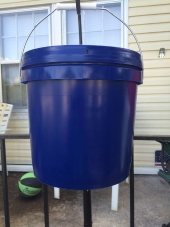posted 6 years ago
Hello B. Hicks,
I personally would use all of the above materials you mentioned, minus the dog poo. The dog poo could be buried in areas you plan on planting trees the following season, buy prepping the planting holes now, putting the poo at the bottom.
To use the materials you have, including some of the advice given. When you move your chickens out, do lasagna layering with the no till method. After you broad fork, first put down your manures, definitely take advantage of horese manure, if it has no herbicides in it. A 2 to 4 inch layer of horse manure will do well. Then over the manure layer, put down a layer of cardboard as weed barrier, if you have King Stropheria spawn, add that to the cardboard layer after wetting it down, it will help quickly break everything down into mushroom compost, while providing a no hassle food crop. Then put down your layers of old hay or straw 2 to 4 inches, and top it off with woodchips at about 4 to 6 inches. Start by planting big things that will spread out and shade your mulch, like squashes, or sweet potatoes: you could also do other large plants like tomatoes. By doing large plants with further spacings, this makes it easier to plant in the newly created deep layers. The close shade from the vines will help keep the mulch moist, so the following season it will be much easier to plant in as everything but the chips will be breaking down into compost; then just shifting the chips to the side will make it easy to plant seeds or small starts into the humus rich organic layer thats been created below the chips. You can also winter your chickens there on the chips, then repeat the layering process as needed in spring, to grow your large warm weather crops; then in the end of summer, the bed should be ready for more easily planting the smaller cool weather crops. The lasagna layering method can go several years before re-layering, especially if you put your chickens on it during a rest cycle, where they add fresh manure to the chips.
Hope that helps!

 1
1




 3
3





 3
3













 1
1




 1
1









 2
2









